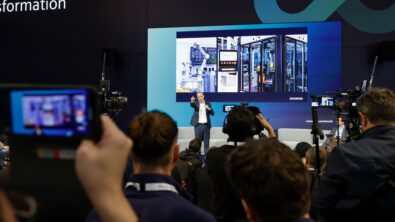The Topic of Lean Manufacturing: Part 3
 When I think of lean and how to communicate it to others, I tend to gravitate toward the simple. Ok, I need a bit more complexity than “the elimination of waste”, but not much more. I need a description which is easily compartmentalized, yet when recalled weaves a sense of process into the thought pattern. There are all sorts of ways in which we try to simplify the complex but for me, I tend to simplify by thinking in three’s.
When I think of lean and how to communicate it to others, I tend to gravitate toward the simple. Ok, I need a bit more complexity than “the elimination of waste”, but not much more. I need a description which is easily compartmentalized, yet when recalled weaves a sense of process into the thought pattern. There are all sorts of ways in which we try to simplify the complex but for me, I tend to simplify by thinking in three’s.
And why not, a ton of stuff comes in three’s: swashbucklers, wishes, sneezes, peas in a pod, blind mice… you get the picture. Hence my three questions, the basis for these posts on lean manufacturing. This being “Part 3”, the final question is; are you driving continuous improvement?
A company truly committed to a lean journey knows that continuous improvement is a fundamental variable in the equation. It has certainly been the glue of progress since humans roamed the earth; we just needed people like Henry Ford, Dr. Deming and Taiichi Ohno to put formal thought behind it for manufacturing’s sake.
That said there are still many manufacturers striving to become lean who speak about continuous improvement, yet have difficulty in actually achieving it in a sustainable way. Organizational and cultural issues notwithstanding, I believe that traditional lean initiatives fall short due to a lack of formal knowledge management. Without it, lessons learned are not captured, unique processes proliferate and decisions are made based on hunches instead of data.
There are a number of forces at work which make it extremely difficult to implement a formal knowledge management solution for production:
- Constant changes in series life and corrective actions on the shop floor
- The sheer complexity of global manufacturing making it difficult to standardize on lean practices across products and production facilities and
- Product design issues discovered by manufacturing tend to be written-off by most as “the cost of doing business” (this one alone warrants a discussion, keep an eye out)
Combined with the uncertainty of recent years, these forces are drastically altering business dynamics and if one of your goals is continuous improvement, you must fundamentally change your approach to planning, optimizing, executing and measuring manufacturing processes.
Continuous improvement requires knowledge, information which sets the direction and provides a basis from which to compare where you are with where you’ve come from. Not necessarily a difficult proposition for a small, single plant, single product manufacturer, but in my experience this is not easily accomplished once you expand to multi-mix or multi-site production. To assure continuous improvement, I believe you need a digital manufacturing solution which provides closed-loop integration to your production facilities. CIMdata tends to agree as they wrote: “Digital manufacturing technologies enable lean practitioners to accomplish bigger improvements faster by leveraging product and process information stored in product- and process-related systems”, in a whitepaper published in April of 2011.
To make the point, ask yourself: if one of your lean initiatives defines a better process which reduces scrap and rework or improves throughput or eliminates expensive tooling, can you easily propagate this practice to other facilities? Do you have a baseline for your other facilities to see how this will impact existing operations before you commit? Do you have the ability to compare plant to plant results to verify it’s delivering the benefits you intended?Does product engineering have any visibility into how design might have played a part in impacting the cost to manufacture? Being able to answer these questions and more is a game-changer that defines the difference between mediocre and world-class continuous improvement.
 So the next time you think you’ve got this continuous improvement thing down, ask yourself: when manufacturing discovers a design problem, do you avoid the hard work and eat the cost, writing it off as “the cost of doing business”? Be honest, because in today’s world of widely distributed capacity, price volatility and increasing competition for more discerning consumers, it could mean the difference between what you perceive is just a short-term loss and the long-term viability of your company.
So the next time you think you’ve got this continuous improvement thing down, ask yourself: when manufacturing discovers a design problem, do you avoid the hard work and eat the cost, writing it off as “the cost of doing business”? Be honest, because in today’s world of widely distributed capacity, price volatility and increasing competition for more discerning consumers, it could mean the difference between what you perceive is just a short-term loss and the long-term viability of your company. Until next time, keep it lean and green.


